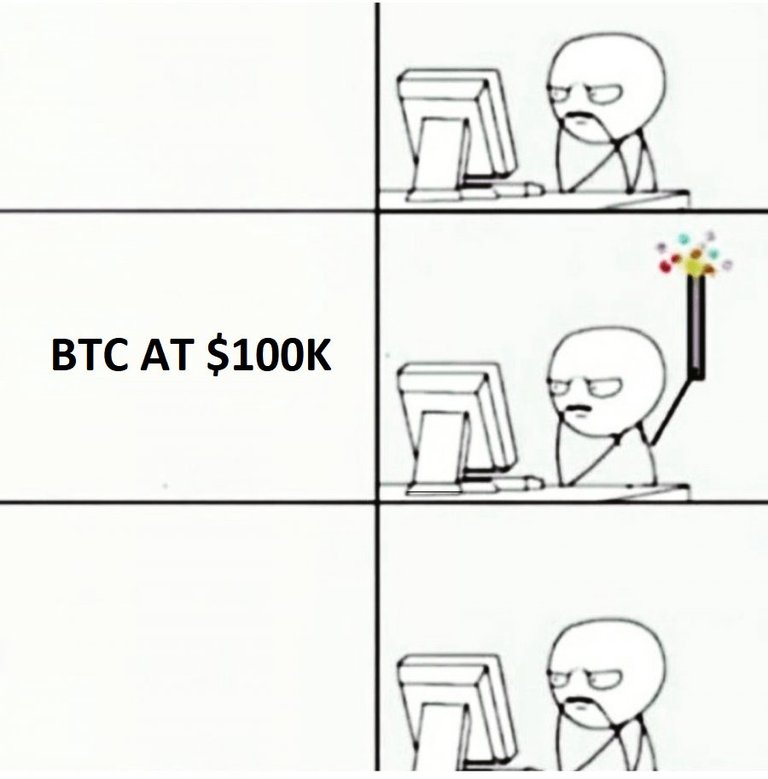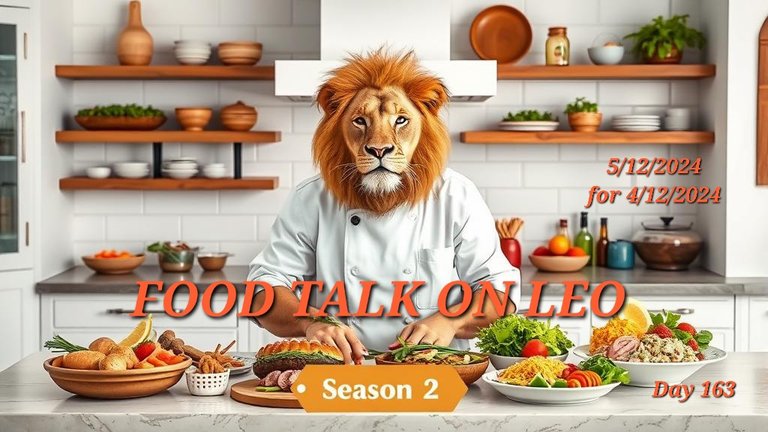Yesterday, the Youtube Summarizer processed a total of 5.2 million input tokens, producing approximately 864,000 output tokens that was posted to chain. That dwarfs the last daily record by about 200k tokens! #summarystats
Putin is calling out the risks of foreign reserves and making a bold case for Bitcoin as a financial lifeline.
After $300B in assets got frozen, he’s pushing crypto for independence from 'political tools' like the dollar. Russia's even got laws now backing mining and cross-border crypto use.
The global finance game is shifting fast thanks to $BTC
What did the painter say to the wall? One more crack like that and I'll plaster you! Credit: reddit @officerwoos, I sent you an $LOLZ on behalf of ben.haase
Crypto.com is putting its security to the ultimate test with a $2M bug bounty, and this is the largest ever with HackerOne.
I think this shows real confidence in their defenses, especially with all those international certifications backing them. Ethical hackers have a big opportunity here, and this a smart way to turn potential threats into trust-building wins for over 100M users worldwide.
This is the #threadcast for Day 163 of the #foodtalk on Leo, 5/12/2024 for 4/12/2024. It's time for some meal inspirations and food conversation. Don't forget to use #foodtalk in your comments. Discussion
Be part of the Food Talk Show On Leo. Here is Day 162 that leads you to the previous threadcasts.
Check out the YouTube food summaries. 👇
Share your meals.
National food celebrations days.
Share other food-related content and ask questions about food.
More about food with tips and tricks will be dropped in the threadcast. Upvote the comments you find interesting & connect with others. Let's have fun. #foodie
Welcome to the #foodtalk threadcast @chicpunki. Thanks for sharing this food. Could you kindly add an information about it, like the name of the food and a bit of how it is made, that way you'll be feeding LEOAI (which is about to be launched) and giving more value.
And this is the world's fastest robot. They're still working on these things and there'll come a time speed we can't get too they will maybe robot sprints will be a game
Grateful for another day. 🙏
I have made some threads by engaging in others, so it is time to make some main threads.
Hello Lions. How's December going for you?
Well, I had a good night's rest and I'm up this morning, I did some morning routine and am ready for this day.
I hope to make the best of it and you do the same. 🦁🧡
#gratitude #cent #positivemindset #beinspired
Hi
It is always important to thank God for a new day.
God blessing you my friend
Yeah, highly important, we can't achieve anything without Him.
Thanks and God bless you too.
I'm doing some important research on #splinterlands that I'd like to reveal on THREADS!
Price $ETH #hive #eth #cent #gifu
The whole market is really pumping my friend. 🐋
good threads
$BTC $HIVE $ETH $LEO
Morning all
GM Bradley! Have a good one!
Thanks, you also :) !BBH !DOOK
@solymi! @bradleyarrow likes your content! so I just sent 1 BBH to your account on behalf of @bradleyarrow. (5/100)
(html comment removed: )
)
Hi, @solymi,
This post has been voted on by @darkcloaks because you are an active member of the Darkcloaks gaming community.
Get started with Darkcloaks today, and follow us on Inleo for the latest updates.
Morning sir, have a good day :)
!BBH
You also :) !BBH !DOOK
@coolguy123! @bradleyarrow likes your content! so I just sent 1 BBH to your account on behalf of @bradleyarrow. (17/100)
(html comment removed: )
)
Morning! Any special plan for today?
get through it. ;) !BBH !DOOK
Haha 😅
That is going to be my whole December. If you read the first part of my long form that I just posted you will understand why ;) #grief
@anderssinho! @bradleyarrow likes your content! so I just sent 1 BBH to your account on behalf of @bradleyarrow. (4/100)
(html comment removed: )
)
Morning, what did you do $BTC
I fucking PUMPED it
@bradleyarrow! @coolguy123 likes your content! so I just sent 1 BBH to your account on behalf of @coolguy123. (1/5)
(html comment removed: )
)
Everyone, write your country name.
AM from PAKISTAN<
HUNGARY
Sweden 🇸🇪
🇩🇪
Finland
lol, this here was pretty inspiring and funny

Back to hustling! 😅
!LOLZ
lolztoken.com
Desserted!
Credit: reddit
@katerinaramm, I sent you an $LOLZ on behalf of ben.haase
(6/10)
Farm LOLZ tokens when you Delegate Hive or Hive Tokens.
Click to delegate: 10 - 20 - 50 - 100 HP
stealing this one !DUO
You just got DUO from @rainbowdash4l.
They have 2/2 DUO calls left.
Learn all about DUO here.
Pretty funny, inspiring and now real life🤯😆😆😆
Slept 2 hours after a party in the city, then I've commuted 7 hours and now I am in the office working. Imagine that!
#funny #life #work #balance

Man I would have been dead if it was me😅
#hustle
Summary Stats from December 4, 2024
Yesterday, the Youtube Summarizer processed a total of 5.2 million input tokens, producing approximately 864,000 output tokens that was posted to chain. That dwarfs the last daily record by about 200k tokens! #summarystats
awesome results waiting to see the. Next one top this one
While $BTC Is hitting all time high so are you bro 💪😅 nice one
haha indeed
Hi, @mightpossibly,
This post has been voted on by @darkcloaks because you are an active member of the Darkcloaks gaming community.
Get started with Darkcloaks today, and follow us on Inleo for the latest updates.
Well done people! 👏👏 Didnt think we would get that much.
How many videos have been summarized so far?
10,220 videos is the current number
@taskmaster4450le should we try to encourage all the users who have ai summaries tool by setting a goal before end of the year?
We need to try and hit 250K threads in the month of December. We were at 150K in November.
Okay I will try to push this message!
Massive growth in data, great job to all those that participated to make it possible especially the visionary @mightpossibly
👏👏👏👏
$RUNE can you please pick up steam now as the crypto market is booming 😂
#cent #bbh #rune #thorchain
Putin is calling out the risks of foreign reserves and making a bold case for Bitcoin as a financial lifeline.
After $300B in assets got frozen, he’s pushing crypto for independence from 'political tools' like the dollar. Russia's even got laws now backing mining and cross-border crypto use.
The global finance game is shifting fast thanks to $BTC
Even though I love crypto, I'd hate to see that terrorist state wiggle out of the situation
Bitcoin, just as any technology can be taken advantage off.
Yeah, brings in a lot of good but also helps the bad actors
We know how badly Elon Musk dreams of building a colony on Mars by 2050.
Some critics say it’s risky, costly and better to solve Earth’s problems first
What do you say to that, Earth first or straight to Mars?
We should be able to both. We have the tech to clean earth. Use nuclear until green energy can take over.
i think that's a good thing, eventually we get to green Energy and the world could be better place
Does it, by chance, have anything to do with the development of nukes?
Oh no, but to be honest a bit of yes
Call me a conspiracy theorist but I think it has everything to do with the potential destruction of the planet.
yes their experiments can cause some damage I won't overlook that possibility at all you're right for bringing it up
#earthFirst #makeMarsOurBitch
Hahahahaha I love the hashtags, make Mars our bitch so if there are aliens they wish to move to earth instead 👍💪
I got that from #kingofthehill !LOLZ
lolztoken.com
One more crack like that and I'll plaster you!
Credit: reddit
@officerwoos, I sent you an $LOLZ on behalf of ben.haase
(7/10)
Farm LOLZ tokens when you Delegate Hive or Hive Tokens.
Click to delegate: 10 - 20 - 50 - 100 HP
Oh wow that's nice let me Watch
Crypto.com is putting its security to the ultimate test with a $2M bug bounty, and this is the largest ever with HackerOne.
I think this shows real confidence in their defenses, especially with all those international certifications backing them. Ethical hackers have a big opportunity here, and this a smart way to turn potential threats into trust-building wins for over 100M users worldwide.
Batteries are getting better.
UK unveiled a nuclear powered diamond battery that can last 5,700 years. It’s safe, sustainable and could power medical devices, space tech, and more
You were thinking of phone battery weren't u 😂
That Grinch look she gives you...

Nice cat
I usually post a bit later in the day but since BTC is at over 100K gotta share something.
Mt. Gox just moved 24,000 Bitcoin worth $2.4 billion after BTC passed $100K. It's unclear why they did it but it may involve creditor payments🤔
Bitcoin smashing through $100K feels like watching history unfold.
A $2T market cap, ETFs raking in cash, and institutional demand booming, this isn’t just another milestone, It’s a shift in how the world views money.
The hype is real, but so is the momentum.
Are we ready for what’s next?
#Bitcoin #Crypto
The thing most don't realize is that failure is part of success, if you are aware of that, it won't make you quit
Nice words
Spotify wrapped is here.
Wen #hive 2024 recap?
Who's waiting?
Inleo wrapped! Anything you might release before end of year @khaleelkazi?
I guess LEOADS. Who knows? He might surprise us with LEOAI. 🦁
inLeo wrapped would be cool, tho there was hiverecap last year so hopefully we'll see it this time around..
I'm waiting...
that would be awesome!
Sure.
Time to feed LeoAI some more!
Another day summarising the knowledge that is on Youtube!
If you have access to @mightpossibly summarize tool, feel free to drop videos here and make delicoius food for LeoAi!
#threadcast
What is #threadcast?
Threadcast is a room where specific activities are carried out... Is just like going live on TikTok or YouTube live...
On Leo we call it threadcast. It can serve different purpose...
Thanks you
If only I had unlimited RC I wonder have filled this up to thousands.
Wasn't checking my RC when I started the YouTube threadcast. Within 2 days I was down to 15.
😂
That's why I haven't put up a Threadcast for 2 days now. But good job my friend.
Ask @taskmaster4450le if he can delegate you some extra :)
To who. The thread is not showing up/indexing.
its was @falcon97 who said he ran out when doing ai summaries
Okay I can delegate some to him
Oh thanks my G, @taskmaster4450le
delegated some RC
Here comes the storm
😈
Make use of it! We need to break 250k in december
Its coming this morning ☺️☺️☺️☺️☺️... As early!
!summarize
!summarize
Massive new record yesterday!!
https://inleo.io/threads/view/mightpossibly/re-leothreads-2xpsvcccf?referral=mightpossibly
!summarize
Mark my words people, we're setting a new record today with the summarizer.
!summarize
!summarize
!summarize
https://www.youtube.com/live/Ru0RLsCWQsk?si=O0-FdU1lwTshaIJ_
!summarize
!summarize
!summarize
!summarize
!summarize
!summarize
!summarize
!summarize
!summarize
!summarize
!summarize
!summarize
!summarize
!summarize
!summarize
!summarize
!summarize
!summarize
!summarize
!summarize
!summarize
!summarize
!summarize
!summarize
!summarize
!summarize
!summarize
!summarize
!summarize
!summarize
!summarize
!summarize
!summarize
!summarize
!summarize
!summarize
!summarize
!summarize
!summarize
!summarize
!summarize
!summarize
!summarize
!summarize
!summarize
!summarize
!summarize
!summarize
!summarize
!summarize
!summarize
!summarize
!summarize
!summarize
!summarize
!summarize
!summarize
!summarize
!summarize
!summarize
!summarize
!summarize
!summarize
!summarize
!summarize
!summarize
!summarize
!summarize
!summarize
!summarize
!summarize
!summarize
!summarize
!summarize
!summarize
!summarize
!summarize
!summarize
!summarize
!summarize
!summarize
!summarize
!summarize
!summarize
!summarize
!summarize
!summarize
!summarize
!summarize
!summarize
!summarize
!summarize
!summarize
!summarize
!summarize
!summarize
!summarize
!summarize
!summarize
!summarize
!summarize
!summarize
!summarize
!summarize
!summarize
!summarize
!summarize
!summarize
!summarize
!summarize
!summarize
!summarize
!summarize
!summarize
!summarize
!summarize
!summarize
!summarize
!summarize
!summarize
!summarize
!summarize
!summarize
!summarize
!summarize
!summarize
!summarize
!summarize
!summarize
!summarize
!summarize
!summarize
!summarize
!summarize
!summarize
!summarize
!summarize
!summarize
!summarize
!summarize
!summarize
!summarize
!summarize
!summarize
!summarize
#ChatGPT #earning
!summarize
Ah, I failed. 😬
!summarize
!summarize
!summarize
!summarize
!summarize
!summarize
!summarize
!summarize
!summarize
!summarize
!summarize
!summarize
!summarize
!summarize
!summarize
!summarize
!summarize
!summarize
!summarize
!summarize
!summarize
!summarize
!summarize
!summarize
!summarize
!summarize
A
!summarize
!summarize
!summarize
!summarize
!summarize
!summarize
!summarize
!summarize
!summarize
!summarize
!summarize
!summarize
!summarize
AI art feels like the IKEA of creativity:
accessible and functional but never replacing the charm of handcrafted pieces.
Sure, anyone can type a prompt and get something stunning, but it’ll never hold the soul of an artist’s hard-earned craft.
Still, seeing creativity become so universal is something I love.
#Ai
@soulguy! @master-lamps likes your content! so I just sent 1 BBH to your account on behalf of @master-lamps. (1/5)
(html comment removed: )
)
!BBH !PIZZA !LOLZ
lolztoken.com
It is slowly coming back to me.
Credit: reddit
@soulguy, I sent you an $LOLZ on behalf of master-lamps
(2/10)
Farm LOLZ tokens when you Delegate Hive or Hive Tokens.
Click to delegate: 10 - 20 - 50 - 100 HP
Facts You Didn't Know
It turns out Identical twins don’t have the same fingerprints so forget about blaming your crimes on your twin😅.
Some twins did face ID on iPhone and tricked it through
I don't want anyone calling me nosy at work so this is what I'll do when they bring but crypto topics 😅

Morning All
I woke up.
Heard $BTC passed 100K whiles I was asleep.
Hello foodie Lions 🦁! Happy Thursday. Welcome to today's show. 🥗🍲🫕
This is the #threadcast for Day 163 of the #foodtalk on Leo, 5/12/2024 for 4/12/2024. It's time for some meal inspirations and food conversation. Don't forget to use #foodtalk in your comments.

Discussion
More about food with tips and tricks will be dropped in the threadcast. Upvote the comments you find interesting & connect with others. Let's have fun. #foodie
This sound nice

Welcome to the #foodtalk threadcast @chicpunki. Thanks for sharing this food. Could you kindly add an information about it, like the name of the food and a bit of how it is made, that way you'll be feeding LEOAI (which is about to be launched) and giving more value.
Glad to have you here. 😊
https://img.inleo.io/DQmcKhdU6UfmSVjDzDqkiPyqbzeiDzx6Hd7257Feo1QEyDv/5080447571431894999%20(1).jpg
Argentine Alfajores! A cookie filled with dulce de leche and covered with chocolate.
Interesting, I like how they look. The white ones are covered in white chocolate right?
Yes,it does.
Alright, good.
Hello friends. Welcome to another episode of the #foodtalk on Leo, Day 163. Dive in, share your meals and other #food content, engage and earn.

Bon Appetit- This Women-Led Restaurant Has Kept Its Michelin Star for 11 Years | On The Line. #foodtalk #food #michelinstar #restaurant #cooking #bonappetit
!summarize
Bon Appetit- NYC’s Best New Restaurant is Reimagining Filipino Cuisine | On The Line. #foodtalk #food #FilipinoCuisine #restaurant #cooking #bonappetit
!summarize
Bon Appetit- How One of NYC's Best Chinese Chefs Makes Fried Rice. #foodtalk #friedrice #food #chinesechefs #restaurant #cooking #bonappetit
!summarize
Bon Appetit- A Day at Chicago’s Only Michelin Star Indian Restaurant | On The Line. #foodtalk #indiancuisine #food #MichelinStar #IndianRestaurant #restaurant #cooking #bonappetit
!summarize
Knorr Nigeria- Egusi in Two Ways: Boiled vs Fried – Which Style Wins Your Heart? #foodtalk #Food #egusi #cooking #boiling #frying #nigeriancuisine
!summarize
BabyCare Channel- Healthy food ideas for 1 year old. #foodtalk #food #babyfood #Heathybabyfood #foodideas #cooking
!summarize
HealthNut Nutrition- 8 Toddler Food Hacks Every Parent Should Know | Easy Meals & Recipes. #foodtalk #toddlerfood #easyrecipes #food #heathyfoods #foodhacks
!summarize
Goldthread- How to Use Chopsticks the Right Way? | Eat China: Back to Basics S4E4. #foodtalk #food #chopsticks #howto #eatchina #eatingwithchopsticks
!summarize
!summarize #food #burger
This is good- twice cooked burger.
Thanks for sharing dear Taskmaster.
And this is the world's fastest robot. They're still working on these things and there'll come a time speed we can't get too they will maybe robot sprints will be a game
Bitcoin was able to cross $100,000 🤯🤯🤯 big events and new confidence in crypto helped.
It'll drop anyways but it sends a signal to millions that crypto has so much potential
#mainstream news is so ridiculous regarding $BTC #cent
msm is ridiculous overall 😅
Out of touch with reality.
$PIZZA slices delivered:
@master-lamps(5/10) tipped @soulguy